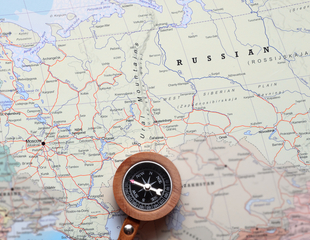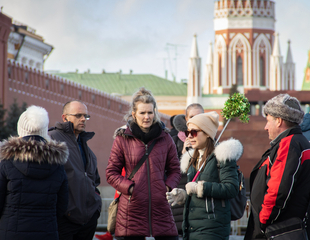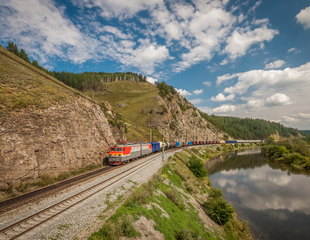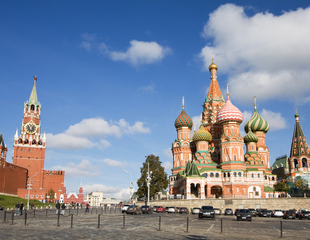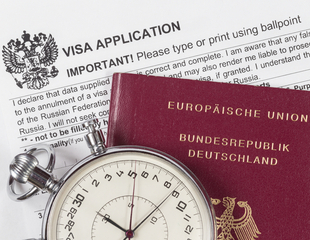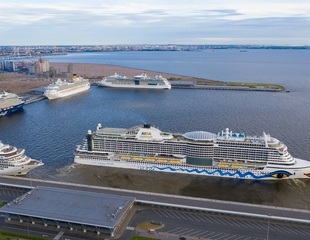Russia offers incredible natural and cultural destinations to impress even the most sophisticated travelers. The beautiful Russian capital, the overwhelming St Petersburg, the endless vast lands of the Russian tundra, or the North with the magic of the Aurora – whichever destination you chose, we recommend planning your itinerary thoroughly in advance and learning about some peculiarities of the country. To prepare better for your trip, please, find a list of transportation tips below.
By train
The country is well-known for its enormous system of railways started by Nicolas the I in 1837. Moscow alone has 9 railway stations with trains running in different directions.
The train system of Russia is one of the most extensive in the world. It is relatively safe, and ticket prices are usually very reasonable. The tickets can be issued 89 days prior to the departure, but you can use russiantrain.com website to see the timetables for all the year round, and also you can book tickets there or make an advance order.

Traveling between Moscow and St.Petersburg will take you less than 4 hours with a bullet train Sapsan. The trip by Sapsan is very comfortable, efficient, and can be budget-friendly if you book in advance. The greatest advantage is that you get from the heart of Moscow directly to the heart of St Petersburg, so all in all a trip by train can be faster than by plane if we take into consideration the time on the way to the airport and for passing the airport formalities.
You can use the suburban trains (electrichkas) to get to small towns around the main cities, the tickets for them are available to buy at the train station and mostly cannot be booked online. From Moscow, you can get by train to Sergiev Posad, for example, and from St. Peterburg - to Velikiy Novgorod.
When it comes to long distances, the trains usually have sleeping berths. There are cars with sleeping compartments for 2 passengers (SW or Sleeping Wagon in Russian) or 4 passengers (Kupe in Russian), an expensive deluxe sleeping-car with 2-berths (only available on some main routes), a third-class dorm car "platskartny" or "platzkart", which has no separate compartments.
Long-haul trains in Russia are never speedy, as their maximum speed is no more than 120 kilometers per hour. However, there is a certain peculiarity of Russian trains: they are always on time. Mind the Russian railway punctuality when planning your trip. If you are just a minute late, the train will leave without you.
When it comes to comfort, though, there is no guarantee that you will get brand-new trains everywhere in Russia. But it is all well-compensated with a spectacular view from your windows, amazing people around you, and a truly authentic Russian experience.
By air
The easiest way to get around Russia is by plane. There are plenty of flight choices from Moscow and St Petersburg. However, it may often not be easy to fly from one small city of the Russian Federation to another, especially in Siberia and the Far East. Even though the distance between them might not be significant, there may not be direct flights between them on the dates you need. Then you will have to fly with a connecting flight with a stopover in Moscow, which will likely increase costs and travel time. Another option is to check the train schedule and travel by train if it suits you.
Russian airlines are easy to book online. You can check these websites if looking for a particular airline flight: Aeroflot.com, S7.ru, Utair.ru, Pobeda.aero (a local low-cost airline). If you want to compare airfares, check the well-known travel meta-search websites such as Expedia, Momondo, Skyscanner, etc. You may also use the Russian travel fare aggregators: onetwotrip.com, aviasales.ru. Besides, you can buy tickets at the airport directly or in the air companies' city offices.
By boat
River cruises are probably the most comfortable means of getting around Russia. Most fascinating routes run from Moscow to St Petersburg and along the Volga river.
There is a number of companies offering Russian river cruises: Vodohod, Mosturflot, Viking river cruises, Volgadream, etc, with some of them providing passengers with very luxurious cabins and outstanding service. Book them either directly online or via travel agencies in your country (together with flight tickets and visa arrangements). The navigation season for Moscow and Volga river cruises starts in May and lasts till October.
Hydrofoil
An exhilarating hydrofoil ride from St Petersburg to Peterhof is the fastest way how to get to and from Russian Versailles. It is, undoubtedly, a great adventure itself. In 40 minutes, you will be transported from the Winter residence to the Summer residence of the Romanovs. Besides, you will be able to enjoy a wonderful boat ride along the famous Neva and the Gulf of Finland passing by innumerous sights.
Most hydrofoils start from the Palace embankment, next door to the famous Winter Palace. Tickets can be purchased online or at the pier. The list of companies providing hydrofoil services includes Neva travel, Peterhof Express, Vodohod, etc. They run every day from May till September (subject to change due to weather conditions).
Another unforgettable hydrofoil ride is from the town of Petrozavodsk, the capital city of the beautiful Russian region Karelia to the Kizhi island famous for its untouched nature and outstanding wooden architecture. Hydrofoils run every day from June till August.
By bus
The majority of large Russian cities have everyday bus services, while in some remote towns and villages inter-city coaches might run only 2-3 times a week. Long-haul busses are less popular than trains because they are less comfortable and they are often used by locals only if there is no alternative.
While coaches are more modern and better equipped in big cities, in some distant parts of Russia there is a high possibility of spending your journey in an old bus, which is usually poorly maintained.
In most of Russia timetables and tickets are not always available online, and is often only in Russian, roads often are bumpy and even unpaved, bus staff might not speak any English.
Despite all these inconveniences, coach service has some advantages: it is one of the most affordable means of transportation, busses run through some really picturesque places, giving you a chance to enjoy Russian scenery and experience local life and friendliness of local people.
To conclude, the intercity bus service in Russia may be rather challenging and is acceptable only for some well-known destinations, preferably for short journeys.
Public transport
Busses, trolleybuses, trams, and underground run efficiently in Russian cities and towns, but can be packed with people during rush hours. The cost of a single ride is from 15 rubles (in Irkutsk) to 60 rubles (in Moscow).
Currently, big cities of Russia are getting newer and more modern busses and trolleybuses. And even if you are not a fan of public transport, you might at least consider having a ride as a part of the local life experience.
Metro
Metro is the best way to get around in many cities. Currently, the list of Russian cities with a functioning metro system includes Moscow, St Petersburg, Nizhny Novgorod, Novosibirsk, Samara, Yekaterinburg, and Kazan. There is also an underground tram in the town of Volgograd (former Stalingrad). Ticket prices vary depending on the city, e.g. the cheapest fare for a single ride is 28 rubles in Nizhny Novgorod and it is 60 rubles in the capital.
Every year Moscow and St Petersburg underground serve 2560, 7 million, and 762 million passengers, respectively. Metro is incredibly efficient with trains arriving almost every minute in rush hours in Moscow and every 2 minutes in St Petersburg.
Not only the metropolitan has become the most important type of public transport in both cities, but it is also an amazing cultural and architectural phenomenon. Let us have a closer look. Metro first appeared in Soviet Russia under Joseph Stalin. It is a well-known fact that when planning metro stations, the leader of the Soviet government envisaged them as Palaces for the working class. Thus, the first stations in Moscow and St Petersburg were designed nearly as beautiful and ornate as palaces. There is a touch of the Socialism ideology in their decoration, indeed. When making your itinerary in Russia do not forget to include a visit to Moscow and St. Petersburg metro stations and allocate enough time to explore them. Masterpieces of Soviet art in Moscow are "Ploshchad Revolutsii", "Mayakovskaya", "Teatralnaya", "Komsomolskaya" metro stations; as for St Petersburg, we recommend you to visit Pushkinskaya, Narvskaya, and Avtovo underground stations.
Car rental
Popular rental car services (Sixt, Europcar, Avis, Rentalcars) are available at the airport terminals of major cities and small towns too. However, in some regions of the country, you might find only local rental companies. They may even not have a website with an English interface, thus, in such cases, we suggest that hiring a driver would be a better idea.
Hiring a car with a driver is the best option for your first visit, especially if you are going to explore deep Russia. Local drivers know better the peculiarities of Russian roads, Russian driving mentality, the Russian Traffic police behavior. They know the best itineraries not only for you to see the sights but also to have literally a smooth journey. Driver's fee can vary and depend on the region, type of car, duration of your trip.
For short trips in main Russian cities, one can now use a new service called Car Sharing. There is a number of companies such as Delimobil, Belka, Yandex drive which offer new and reliable cars for those not looking for long-term rentals. To book a car you will need to download a mobile app and provide the company with a list of necessary documents, including a copy of your passport, driving silence, credit card information to make a payment. Above all, you have to be of a certain age (depends on the company – min 23 years old) and have at least 3-5 years of driving experience (depends).
Taxi
Taxi in Russia is reasonably priced and easy to use. Most Russian people prefer Uber Russia or Yandex. Other options would be Gettaxi, Citymobil, Taxovichkof, however, they are less popular among locals.
To facilitate the process of getting a cab in Russia, we recommend you to download special apps, e.g. Yandex or Uber Russia. First of all, it will help you with the language barrier, which you will certainly encounter, as most drivers do not speak English. Secondly, using the mobile app, you can compare types of taxi services and decide whether Comfort is enough for you or you would rather go with Premier or Elite.
Avoid taking services of illegal taxi companies when arriving at the airport. Simply ignore some pushy drivers standing in the middle of arrival halls and offering to take their cabs. Not only that they do not represent the official airport taxi company, but they also overcharge passengers. At the airport, you should only look for authorized airport taxis at the official taxi stands. When in small towns and villages of Russia, if you happen to take an unofficial taxi, just like everywhere else in the world, discuss the price first before getting in.
Hitchhiking
We do not recommend hitchhiking in Russia if this is your first time in the country. It is generally safe, but it can be rather challenging due to a language barrier. English, even though spoken by Russian people in cities, might not be existent in some isolated villages and towns, so there is a high chance that drivers who stop to give you a lift will not be able to understand you. Besides, hitchhiking is often not for free in Russia and drivers will expect you to pay them, especially in cities.



